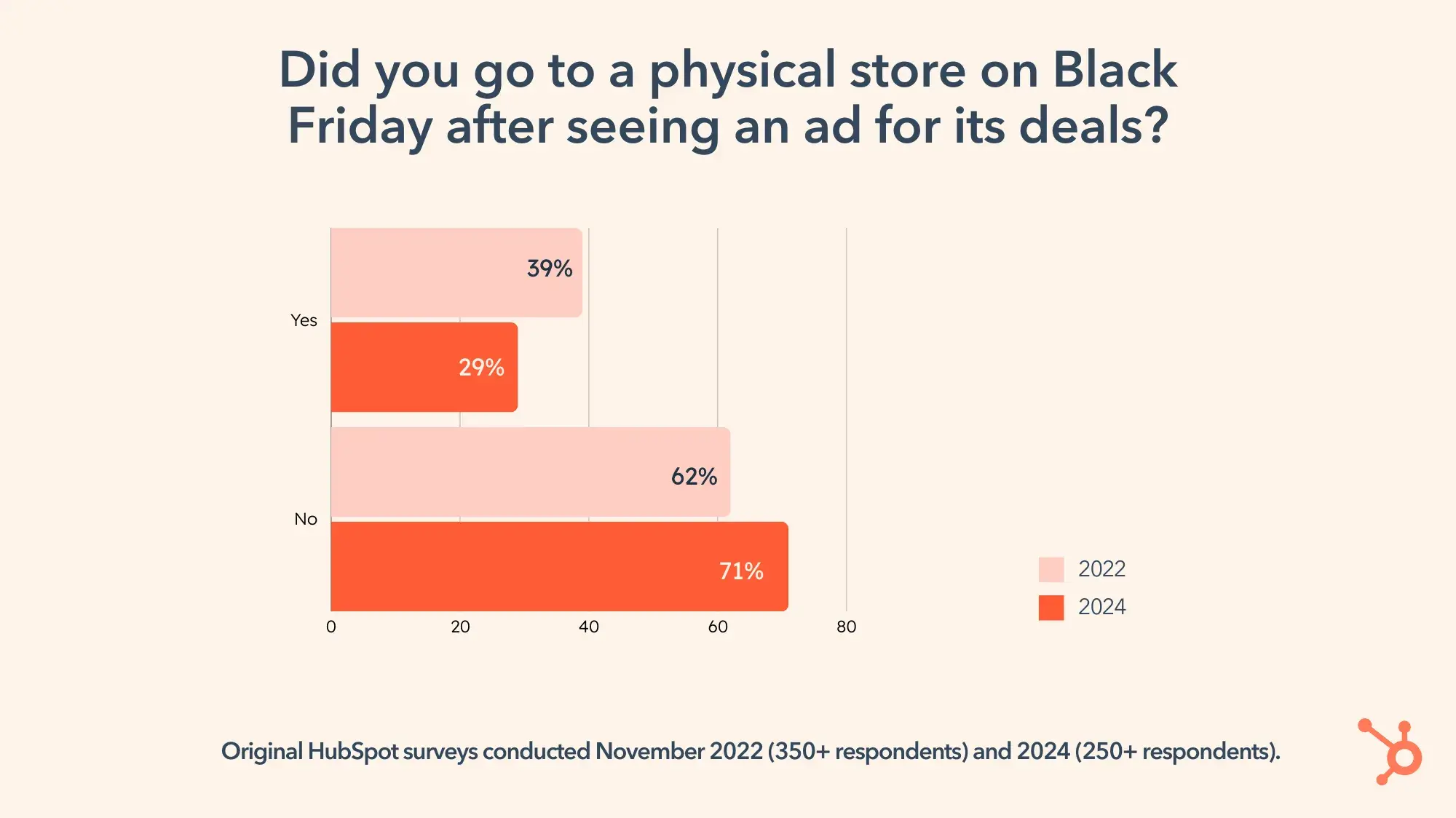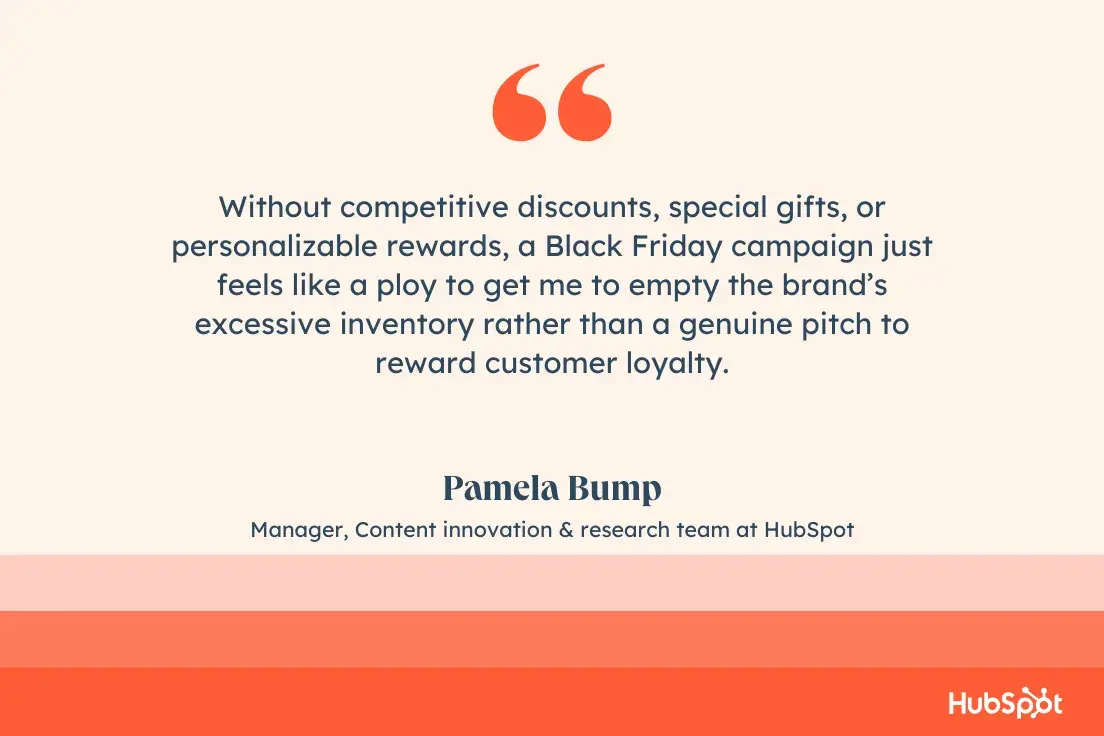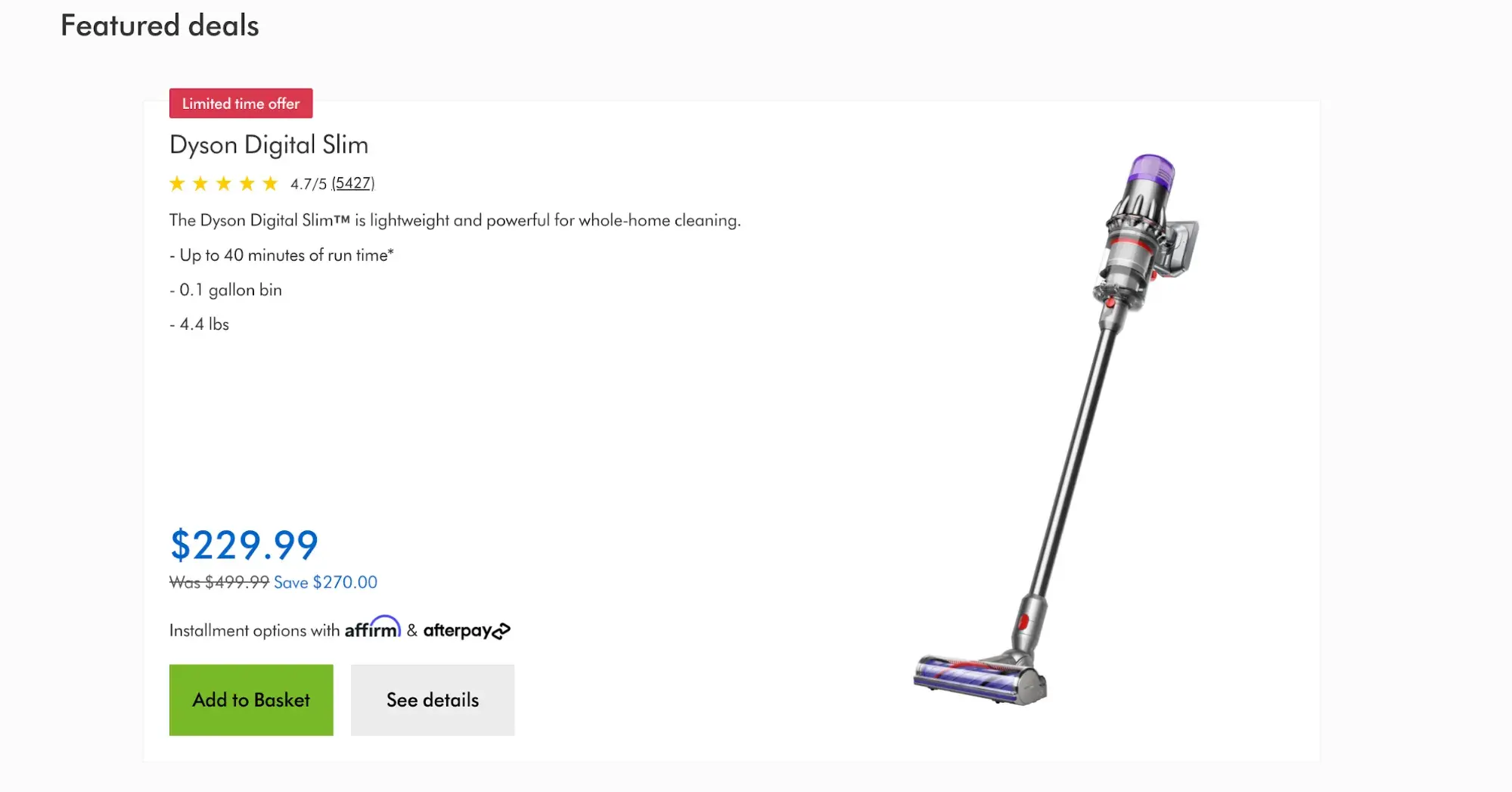It’s officially the holiday season. If the majority of your workforce is hybrid or remote, like we are at HubSpot, that means it’s time to come up with a few virtual holiday party ideas for your team.
Let’s face it — traditional in-person holiday parties were arguably easier to plan.
Just order some festive food and drinks to the office (or gather at a local restaurant), throw on some holiday music, let folks mingle for a few hours, and everyone generally left satisfied.

However, hybrid work presents some new challenges.
I’ve pulled together some virtual holiday party ideas and included a few tips from remote HubSpotters on how to host a hybrid or virtual holiday party with ease.
Table of Contents
How to Plan a Virtual Holiday Party
The key to planning a successful hybrid or virtual holiday party is the same as one of the most important principles of marketing: knowing your audience. You want it to be engaging for your team, so that’s going to take some prep work.
We’ll get into the list of virtual holiday party ideas in just a moment, but I’ll start you off with five steps to get your party in motion.
1. Pick a good hosting platform.
The platform you use for your virtual holiday party can either make or break the experience, so you’ll want to pick a good one.
Zoom and Microsoft Teams are the most common options for hosting virtual gatherings. Some companies like Confetti and CourseHorse also allow you to facilitate virtual holiday parties on their platforms (for a fee if your budget allows).
My recommendation? If you already use a video conferencing for regular work activities, stick with that one. Your employees are comfortable with it, and you’re likely up to speed on what your hosting capabilities are.
And if you’re planning to include people outside of your organization, integrations like this one with Zoom make it easier to extend the invite externally.
2. Decide on the date and time.
In my opinion, you have about two or three weeks during the holiday season to schedule your party. I’d aim for earlier in December. The closer you get to the end of the year, the harder it is to get people together.
Consider placing a calendar hold for the party a few months in advance, so your employees can plan around it. No worries if you don’t have all the details yet. You can always fill them in later.
Also, do it on company time, and limit it to two hours or less. The end of year wrap-up circus is a wild one, and your holiday party shouldn’t add any unnecessary stress.
I’d aim for a 3pm start time and plan to wrap it up by the end of the day.
3. Choose the right activity (or activities).
When planning the agenda for your hybrid or virtual holiday party, keep it light and fun. And when in doubt, provide options so people can choose their own adventure.
For example, Zoom lets you set up breakout rooms. You could have one room with an activity (e.g., holiday paint and sip), one with an experience (e.g., virtual self-care session), and another space where people can just hang out and chat.
That way, there’s a little something for everyone.
Tip for hybrid teams: One way to encourage engagement between in-person and remote guests is by placing them in groups or pairs. For example, if you play any virtual holiday mini-games, mix your teams up by location.
4. Make it optional but encouraged.
When you share the virtual holiday party invite with your team, don’t make it mandatory.
I know you may be worried that people won’t show up to an optional event, but things tend to be a little less fun when you feel like you have to be there. At least for me.
If you design a virtual holiday party that people want to attend, you won’t have to worry about attendance. And if you give folks enough notice, they’re more likely to participate.
5. Set the scene and have some fun with it.
The last step on the list is to make sure your virtual holiday party feels like an actual party.
Have some light holiday music playing in the background. Encourage your team members to use holiday-themed virtual backgrounds or dress in holiday gear.
Maybe even send them a festive treat to enjoy during the party — like a hot chocolate kit or holiday cookies.
The right ambiance will draw people in and make them stay.
Tip for hybrid teams: Create a shared experience for all attendees so everyone feels included. For example, if your in-person decor includes paper snowflakes and vanilla candles, consider sending virtual guests a smaller-scale version of these items for their home office.
Virtual Holiday Party Ideas
Now, onto the fun part. I scoured the Internet, bothered my colleagues, and dug deep into my memory bank of holiday parties past to give you 21 virtual holiday party ideas to consider this year.
P.S. The ones with a 🎄 are some of my favorites:
- ‘Anything’ Presentations 🎄
- Holiday Recipe Swap 🎄
- Virtual Self-Care Session 🎄
- Holiday Card Writing 🎄
- Ugly Sweater Contest
- Virtual Scavenger Hunt 🎄
- Holiday Paint and Sip
- Virtual Escape Room
- Holiday Cooking or Baking Class
- Virtual Talent Show
- Holiday-Themed Trivia
- Virtual Coffee, Tea, or Wine Tasting 🎄
- Home Office Holiday Decorating Contest
- Holiday Movie Watch Party
- Holiday Guessing Game
- Virtual Gift Exchange
- Name That (Holiday) Tune 🎄
- Virtual Team Awards
- Virtual Holiday Mini-Games
- Holiday Icebreakers
- Early Holiday Break 🎄
1. ‘Anything’ Presentations
You probably weren’t expecting the first virtual holiday party idea on this list to be focused on presentation building, but hear me out.
Last year, the HubSpot Blog team organized a holiday mixer where everyone had an opportunity to share a two-minute presentation on anything.
It was so much fun that we’re bringing it back this year for round two! From Bravo’s Vanderpump Rules to “What makes a good karaoke song?” — truly, no topic is off limits.
How to Execute It
- Ask team members to put together a two-minute presentation on a topic of their choosing. Give them at least two weeks of notice to prepare.
- Include a few presentation options for inspiration. They can present live with some storytelling, put together a presentation deck, or record their presentation to share.
- Before the holiday party, put everyone’s names into a random name picker, and choose the presenter order by drawing names. (It’s a lot of fun to do this live, but you can also jot down the order in advance.)
- If someone doesn’t have a topic prepared, you reserve the right to assign them a low-pressure topic (e.g., favorite vacation, best day of the week, etc.) to present on the spot.
Here’s a sneak peek at the instructions we received this year:
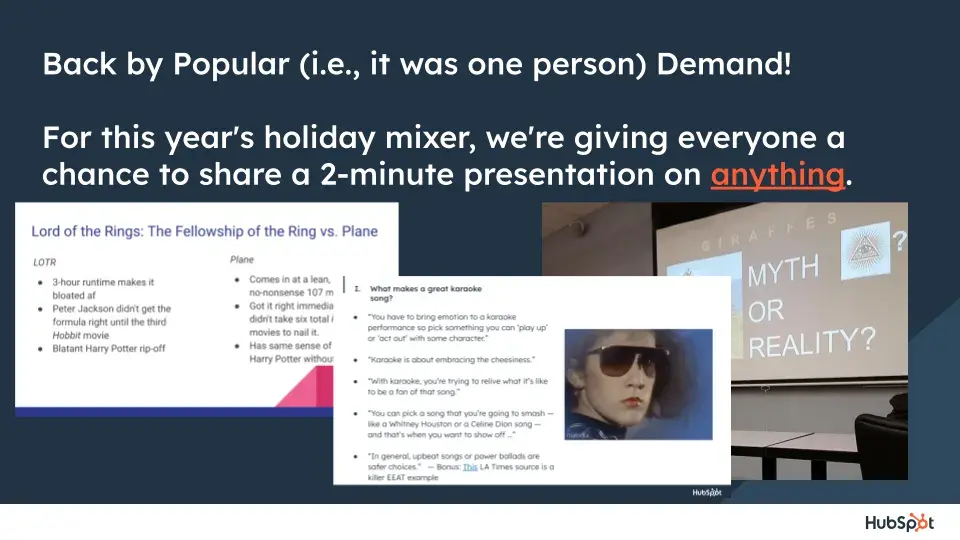
2. Holiday Recipe Swap
Holiday recipe swaps are great because of two reasons:
- It’s a quick way to add to your personal recipe collection, and
- People usually contribute their favorites based on taste, convenience, or tradition.
In other words, you’re almost guaranteed to get some good ones. Plus, it’s a low-lift virtual holiday party option that’s pretty easy to execute.
How to Execute It
- Ask everyone to submit one or two of their favorite holiday recipes and compile them into a document. Bonus points if you have time to organize them by type (e.g., appetizer, main, side, dessert).
- During your holiday party, encourage each member of your team to introduce their recipe and why it’s special to them. If you want to take it a step further, encourage participants to cook a sample of their recipe to present (and eat).
- Circulate the document before or after the party so everyone can browse the list and try new meals over the holiday break.
3. Virtual Self-Care Session
The holidays are a time to relax and unwind.
Give your employees a head start by bringing in a virtual yoga instructor, facilitating some guided meditation, or encouraging them to take time during the party to do something they enjoy off-camera.
How to Execute It
- Decide which activities you’ll focus on. You can use resources like Let’s Roam to set up a virtual yoga session or YouTube to access free relaxation and meditation videos (see example below).
- You can also send a team poll to see which activities they’re most interested in. You may even have an employee who’s willing to lead a self-care session.
- During the party, host a full group session or consider using breakout rooms so people can pick which sessions to participate in or rotate between a few.
4. Holiday Card Writing
There are a couple of different ways to incorporate holiday cards into your virtual holiday party. Your employees can write some for their teammates.
Or you can use the time to write holiday cards for a good cause like Caring by Card does for nursing home residents.
How to Execute It
If you want to do an internal holiday card swap:
- Use an online generator to randomly pair teammates to write cards for each other, and let everyone know who their partner is ahead of time.
- Then, ask them to write a holiday card to exchange with their partner during the party. Sites like American Greetings let you create and send virtual cards, but you could also use one of Canva’s free holiday card templates.
- When folks join the meeting, you can put the partners into breakout rooms to facilitate the exchange. Then, you can bring everyone back together for an optional show and tell.
If you want to do holiday card writing for a cause:
- Find a cause you want to support. Charities like Caring by Card and The Angel Card Project can help you get your greeting cards into the hands of those who need them the most.
- During the party, you and your employees can spend time writing holiday cards for good.
5. Ugly Sweater Contest
This one’s a classic, and it requires little to no planning on your part.
To host a virtual ugly sweater contest, simply ask everyone to wear their ‘ugliest’ holiday gear for the festivities. Employees can make their own or pull something questionable out of their old winter clothes bin.
If you do make it a contest, consider offering a prize like a gift card or a work perk for the winner. Extra vacation hours, anyone?
How to Execute It
- Announce the contest in advance to give people enough time to prepare, and include a reminder in your holiday party invite.
- During the party, do a show-and-tell of everyone’s ugly sweaters. You could also use some time during the holiday party to allow guests to create them in real-time.
- Then, allow people to vote for their favorites. Zoom’s polling feature is a good option for this. The person with the most votes wins. Or if you have a larger team, you can have first, second, and third-place winners.
6. Virtual Scavenger Hunt
There are so many different ways to integrate a scavenger hunt into your remote holiday party. You can pick from tons of templates online and adapt them for virtual use.
But my favorite way to do this is to focus the hunt on items around the house. The first person to bring back an item related to your prompt wins.
Some prompts may include:
- Grab something you decorate your house with for the holidays.
- Bring back something that rhymes with ‘tree.’
- Show us something red that you use for work.
How to Execute It
- Create a list of prompts (similar to mine above) before the party. You could consider crowdsourcing ideas from your team and selecting them at random.
- During the party, the host announces the prompt and notes who finds the item first in each round. The person who wins the most rounds gets a prize. (When I’ve done this in the past, prizes have included gift cards or free company gear.)
- You can also hold time after each round for an optional show-and-tell if people are interested in sharing more about the items they found.
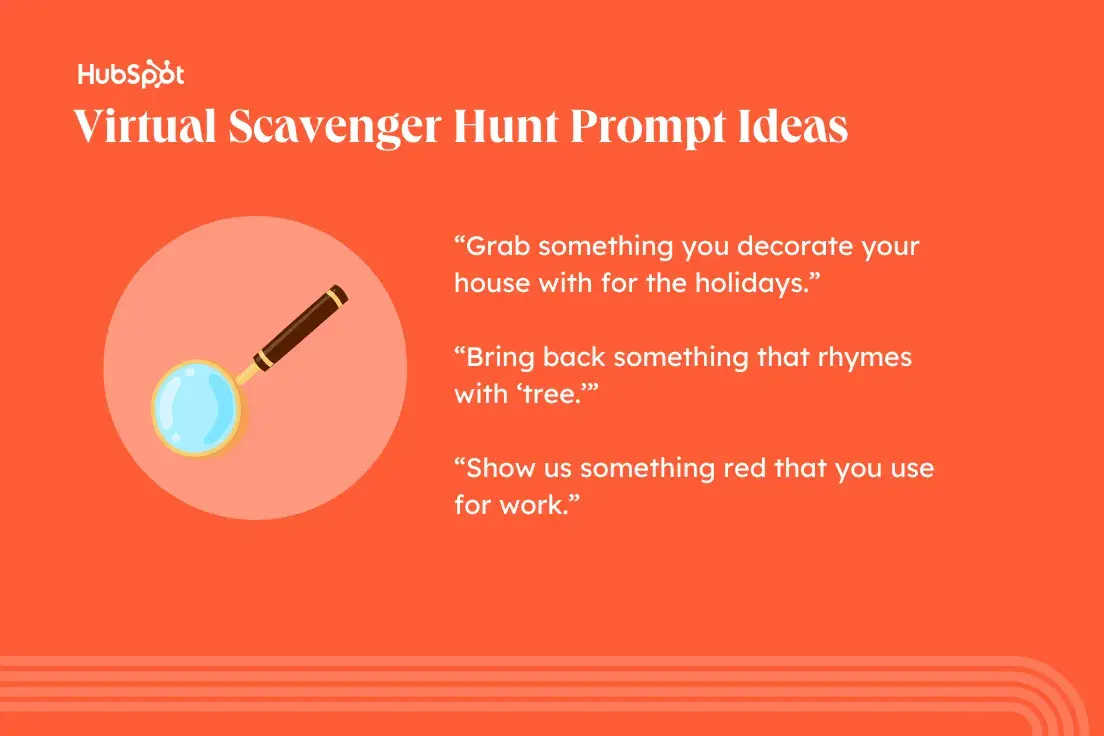
7. Holiday Paint and Sip
A virtual paint and sip party is an informal way for your employees to test out their holiday art skills. Everyone gets a canvas, some paint, and a few brushes to try and recreate a picture of your choice while enjoying a beverage of theirs.
It does require you to provide the supplies, but you can find low cost options on Amazon or from craft stores like Michaels. You could also consider giving your employees a small stipend to gather their own materials.
Plus, companies like Online Paint & Sip offer cost-friendly pre-recorded classes that you can screen share with your team to facilitate the experience.
How to Execute It
- Purchase a pre-recorded class or hire a live instructor to lead the paint and sip experience on your desired day and time.
- Send the paint supplies to all participants ahead of the event.
- Spend your virtual holiday party painting and socializing with your colleagues, and encourage everyone to enjoy their favorite drink while they work.
8. Virtual Escape Room
Escape rooms are fun team-building activities because they require you to solve a time-sensitive puzzle — like a series of riddles or mini-games — to accomplish a goal.
The last time I visited one in person, we had to follow a set of clues to find a hidden key that allowed us to break out of the room before time ran out. We got an hour to complete the mission. (And we got out in 59 minutes, ha.)
Companies like Puzzle Break, Mystery Escape Room, or The Escape Game allow you to host these at home and online.
How to Execute It
- Pick your virtual escape room experience, and include instructions to join the game in your holiday party invite.
- Then, break your team out into groups. Keep in mind that some platforms limit games to 10-15 people, while others allow for larger groups. You may need to schedule multiple escape rooms to accommodate your team.
- Kick off the party, and let the games begin. Once everyone is done, you can bring the full team back together for a fun debrief on how things went. And you could even offer a prize for the team(s) who escape the fastest.
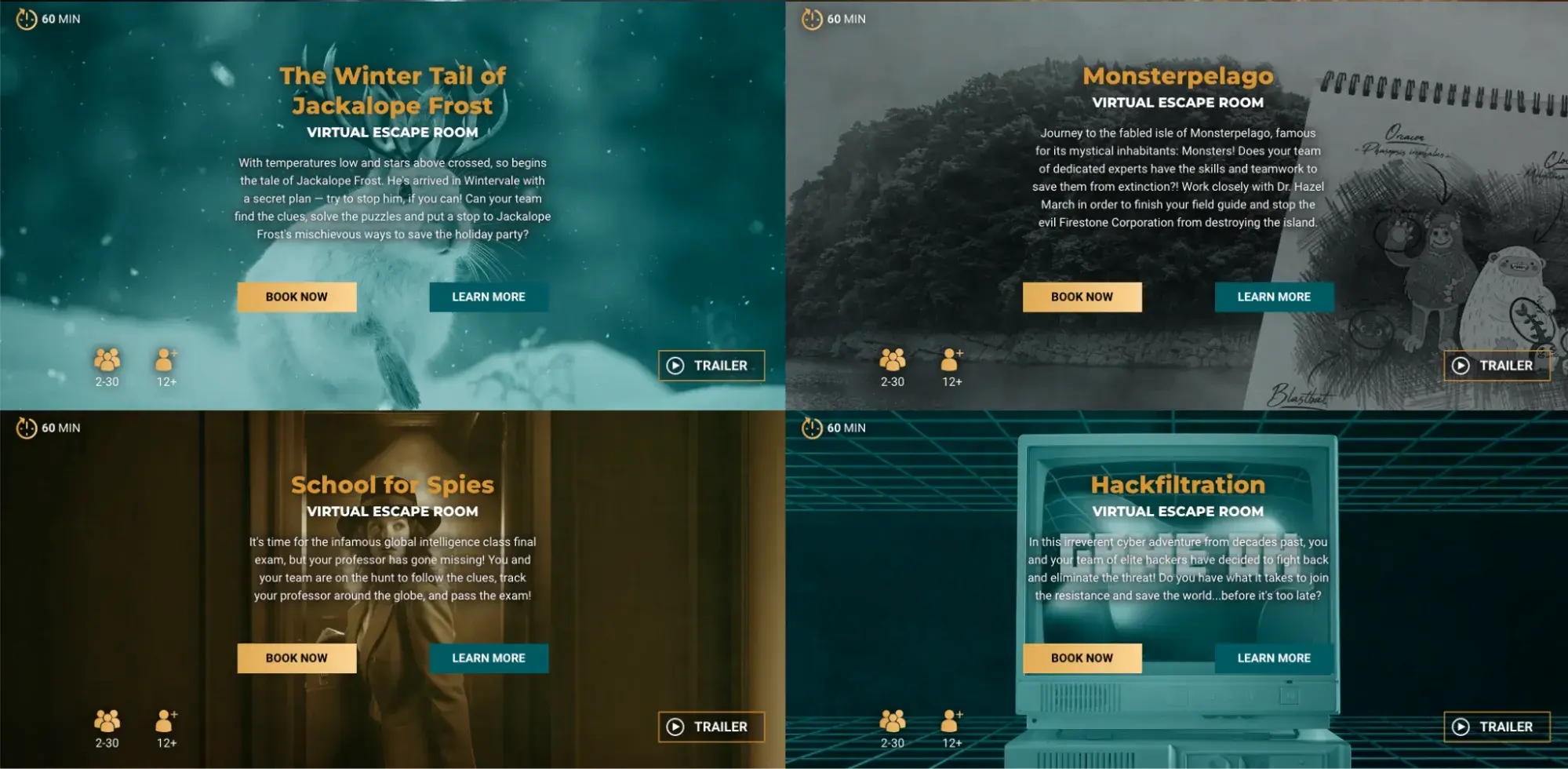
Source
9. Holiday Cooking or Baking Class
Personally, I love holiday parties that involve food, and that can be hard to do in a remote setting. If you choose to do a cooking or baking session for your virtual holiday party, you have a few options.
You can hire a chef to lead the class, ask someone food-savvy on your team to volunteer, or host an unstructured cooking/baking hour.
How to Execute It
- Check out an online cooking class service like Cozymeal to book a team slot, or pick a recipe (or offer a few options from this list) on your own.
- Add the participation instructions and ingredients list to your holiday party invite. Make sure you give people enough time to pick things up. Bonus points if you can provide a small stipend to purchase the ingredients.
- When everyone joins the virtual party, the chef or team lead will walk them through the meal prep process in real-time. For more informal gatherings, just let everyone know when it’s time to start cooking.
- Eat, drink, and be merry with your teammates. Participants can ask questions and chat amongst themselves while they cook.
10. Virtual Talent Show
Calling all singers, dancers, and talents in between. Another virtual holiday party option is to host a talent show. Give your team members an opportunity to show off what they’re good at — outside of work, of course.
You’ll be surprised how many hidden talents you uncover. And you get to learn more about your colleagues and what makes them special.
How to Execute It
- Ask everyone to submit their talent ahead of time, and create a schedule for the event. Depending on the size of your team, you may want to impose a time limit (e.g., 2-3 minutes per act).
- Delegate a host to emcee the talent show and introduce each of the participants in order of performance.
- If you feel inclined to make it a contest, you can use the polling feature on your platform of choice to let people vote for their favorite acts. However, I’d recommend treating it more like a showcase so everyone feels comfortable participating.
11. Holiday-Themed Trivia
Holiday trivia is another traditional choice and usually a crowd-pleaser. You can snag trivia questions from across the web or use a formal platform like Kahoot to test your teammates’ knowledge on all things holiday fun.
How to Execute It
- Compile your trivia questions or choose your online trivia game. If you use a platform like Kahoot, most of the work is done for you, and employees can join the trivia game from their own computers. Be sure to include any access info in the holiday party invite.
- If you’re creating the game yourself, build a trivia slide deck and put each trivia question on its own slide. Share your screen during the party, cycle through each question, and ask participants to drop their answers into the chat.
- Whoever submits the correct answer the fastest wins the round, and the person who wins the most rounds gets a small prize.

12. Virtual Coffee, Tea, or Wine Tasting
Tastings of any kind are sure to be a hit at your next virtual holiday party.
Companies like Driftaway (for coffee), Open Door Tea (for tea), and In Good Taste (for wine) allow you to send samples to all of your employees, and they provide instructions on how to conduct the tasting from home.
How to Execute It
- Decide on which type of tasting you’ll facilitate. It’s always a good idea to get input from your team to ensure maximum enjoyment. And if you’re going to host a tasting that involves alcohol, make sure you have a non-alcoholic option available for those who don’t drink.
- During the party, have the host guide the team through the tasting experience based on the instructions provided for each sample. Some companies offer professional guides, so you could also bring in an expert to do this part.
13. Home Office Holiday Decorating Contest
I always think of meticulously decorated cubicles for contests like these, but this is very much transferable to virtual settings.
By now, remote and hybrid employees have set up some type of space in their homes to do work — whether it’s the kitchen table or an actual desk. This gives your employees an excuse to decorate their homes and get into the holiday spirit.
How to Execute It
- There aren’t many rules here. Let your employees know you’re holding a holiday decorating contest, and ask them to bring their ‘submissions’ to the holiday party.
- Admire everyone’s decor via Zoom or Teams and vote on a winner (or two). And if you have the budget for it, reward the winner for their design skills.
I have to say, this one below might be hard to beat. But if you’re looking for more inspo, take a browse through Pinterest.

Source
14. Holiday Movie Watch Party
A holiday movie watch party is one of the best ways for your team to turn their brains off. Send around an employee survey to ask for movie favorites, and consider offering multiple movie options in different breakout rooms at the party.
How to Execute It
- Decide which movie (or movies) you’ll play. Load it up using one of your personal streaming accounts or ask a few team members to contribute theirs.
- Happy watching! Screen share the movie in one large group and/or designate multiple people to share a movie in each room.
15. Holiday Guessing Game
This one is similar to holiday trivia but it’s more of a who-said-what guessing game. You can source fun holiday facts from your team and turn those into questions.
To help with sourcing, try conversation starters like ‘What’s your favorite holiday memory?’ or ‘What’s the best holiday movie?’ Then, during the party, let your employees guess which fact belongs to which teammate.
How to Execute It
- Build a guessing game slide deck and put each fun fact on its own slide. Share your screen during the party, cycle through each fact, and ask participants to drop their guesses into the chat.
- Reveal who the fact belongs to and give that employee the option to share more details with the team.
16. Virtual Gift Exchange
The season of giving calls for a gift exchange.
Apps like Elfster make Secret Santas easier than ever to execute. Users can even create wishlists so gift-givers have a few items to choose from.
This ensures everyone is happy with their receivables (and it takes some of the pressure off the Secret Santas, too).
How to Execute It
- Use a tool like Elfster to invite your team to the gift exchange. Set a spending limit (e.g., $15 or less) and ensure you give your employees enough time to brainstorm and send a gift to their exchange partner.
- You can choose to have everyone present their gift items during the holiday party or use that time to reveal the pairs and make the virtual exchange.
17. Name That (Holiday) Tune
A spin on the show Name That Tune, this virtual holiday party idea is for music lovers. If you choose this activity, you get to listen to holiday music and inspire a little friendly competition among your coworkers.
How to Execute It
- Break everyone into small teams (2-4 people), and have each team choose their own name. Jot down all of the team names, and choose a captain on each team to keep score.
- Play a short clip of a holiday song for the first team. Make sure you brainstorm a list in advance and have as many queued up as possible.
- Give the team a time limit to guess the title and artist of the song. Give them one point for each correct answer. You can also choose to open the song up to the group if the selected team guesses incorrectly. Then, the first team to get it right wins the point(s).
- Repeat for as many rounds as you’d like. The team with the most points wins.
18. Virtual Team Awards
Why not use your virtual holiday party as an opportunity to recognize your team’s hard work throughout the year? It’s the perfect time to show your employees some love.
You could even make it fun. Rather than only focusing on task-based achievements (such as top performer or most organized), try to incorporate superlatives (such as most likely to make work fun or best at small talk).
How to Execute It
- Create your list of awards and/or superlatives. Then, circulate a poll via Google Forms or a tool like Doodle and ask your employees to vote for their teammates in each category.
- Use the party to reveal the winners of each award or superlative. Allow time for each winner to give a brief speech of appreciation.

19. Virtual Holiday Mini-Games
From Gingerbread Wars to Quiplash, the holiday mini-game opportunities are endless. Sites like Team Bridge have a full suite of social games for remote teams of all sizes and interests.
If you want to keep things simple, you can set up a bingo game with premade holiday bingo cards (or build your own on Canva). You could also use skribbl.io to play Pictionary.
How to Execute It
- Pick a handful of games and designate game ‘hosts’ in breakout rooms. Let your employees join whichever activities they want throughout the party.
- Consider leaving the main room open so that people who aren’t game lovers can mix and mingle.
20. Holiday Icebreakers
If you’re using your virtual holiday party as a team-building opportunity, try pulling together a set of holiday-related icebreaker questions and popcorn-ing them around the virtual room.
Here are some ideas:
- What’s the best gift you’ve ever given someone?
- Do you prefer apple pie or pumpkin pie?
- Name your least favorite holiday movie or song.
- Would you rather have wet socks or no jacket in the winter?
How to Execute It
- Gather a list of icebreaker questions, and drop them in the chat during the party. Pass the question around to each teammate until everyone answers.
- Repeat!
21. Early Holiday Break
I may have actually saved the best for last. Instead of hosting a formal party, tell your employees to sign off an hour or two early before the holidays.
Sometimes the best virtual holiday party is no virtual holiday party at all.
How to Execute It
- Let folks know ahead of time that you’re closing up shop early so they can prepare accordingly. Then, do not work during the designated holiday time off.
(I mean it. Yeah, I’m looking at you, overachiever.)
Ready to put one of these virtual holiday party ideas into practice? Take note of these tips from remote and hybrid HubSpotters as you prepare to host your party.
1. Pick a goal.
When you‘re planning your virtual holiday party, decide what your goal is. For example, it’s hard to play a game while also getting to know each other. But if your goal is just to have fun, a game might be the perfect fit.
Caroline Merewether, a hybrid senior director of product strategy and ops at HubSpot, says, “The biggest takeaway is to figure out if it’s more about deepening relationships or playing a game.”
One of Merewether’s favorite events her team put on was a virtual escape room.
“It was fun to do something different, and that was a nice mental shift. But it wasn’t great for getting to know people because we were trying to solve for clues. For our next party, we wanted to drive conversation between us,” she adds.
For her team‘s next virtual holiday party, they’re sending everyone international candies to try, hosting a costume contest, and playing some online trivia.
Jeff Boulter, a remote staff technical lead at HubSpot, decided to combine the interactive activity with a way of getting to know each other via an interactive trivia game.
To start, Boulter sent out a Google Form with a mixture of icebreaker questions. A few examples included:
- What was your first online handle or email address?
- What‘s the weirdest job you’ve ever had?
- What’s your least favorite song?
- What’s an unusual skill you have?
Then, they used a free online trivia site called MyQuiz.
Here, the answers were either picking one person from their squad (whose least favorite song is “It’s a Small World,” for example) or picking the correct answer amongst three other made-up answers.
The picture below is an example of what one of the questions looked like.

2. Plan in advance.
It’s also important to give yourself enough time to plan your party. Send invites ahead of time, finalize the agenda, and test-run activities before the big day.
Eimear Marrinan, the VP of culture at HubSpot (and one of our hybrid employees), says, “The end of the year is busy. Really busy! Give people advanced notice and book time in advance.”
She continues, “A lot of people are juggling right now, so being protective of time is important. Similarly, be mindful of caregivers on your team, or anyone that may have blocked time in their day.”
Navigating team calendars is always tricky, and it’s even more difficult around the holidays. Make sure you plan accordingly. Otherwise, you may have a few no-shows.
3. Use a spreadsheet to stay organized.
There are a lot of logistics involved in hosting a virtual holiday party.
Kara Korosec, a remote senior customer success manager at HubSpot, emphasizes the power of a good spreadsheet for staying on top of your plans.
“I used to coordinate Secret Santa at my last company, a 100% remote company,” says Korosec. “I set up a spreadsheet where everyone listed some of their interests. Then, we used a random generator to make assignments.”
Korosec continues, “Everyone had a budget of $50 and used the spreadsheet as inspiration for what to get. After the gifts were mailed, we had a Zoom where we shared our gifts and guessed who our Secret Santa was.”
Ah, the power of spreadsheets.
4. Tap vendors to make it interactive.
Virtual events might automatically feel a little hands-off, but this doesn‘t have to be the case. In Korosec’s Secret Santa example, they opened the gifts on a live Zoom call.
The goal here is to be creative.
Marrinan says, “There are a ton of amazing remote vendors and minority-owned businesses that we partner with on the Culture Team, and they are doing amazing work.”
I’ve already mentioned a few options like Cozymeal and Online Paint & Sip above, so as Marrinan notes, “If your budget allows for it, consider outsourcing to the experts.”
5. Incorporate food and drinks.
Providing food and drinks is typically part of in-person holiday gigs. So why can’t this be true of remote holiday parties, too?
If your budget allows, treat your employees to a holiday lunch with a digital gift card from Uber Eats or DoorDash.
If you’re planning to provide food in any capacity, Marrinan shares some important (chicken) nuggets of advice:
“Ask questions if you’re incorporating food and drinks. Are there allergies or preferences? If you’re arranging a cocktail hour, does everyone drink alcohol? This is all about being inclusive in how you’re arranging your event.”
Refreshments give people a reason to celebrate and enjoy the party. Make sure you’re aware of any restrictions so everyone can indulge.
Speaking of inclusivity …
6. Always lead with an inclusive mindset.
A major obstacle to remote meetings is making people feel included. And at HubSpot, inclusivity is at the core of our company culture.
Marrinan suggests, “We are working in a distributed and remote world right now, so when thinking through a holiday event for you and your team think big and think global.”
She continues, “Will the timezone work for all on your team? Do ‘The Holidays’ resonate across the globe? Make sure you plan something fun and inclusive that everyone can get involved in.”
7. Send something physical.
Just because your event is remote, doesn‘t mean you can’t include a physical element in your virtual holiday party.
“Can you send something out to the team in advance to spur some excitement? This doesn’t have to be a physical gift — maybe it is a handwritten card or a note of gratitude,” Marrinan shares.
“A holiday event doesn’t have to be a big, big thing. Sometimes it’s the simple acts of kindness that go a long way for people.”
‘Tis the Season for Virtual Holiday Parties
Holiday parties are fun and festive events, and hybrid or remote companies can still keep that tradition alive. Use these virtual holiday party ideas to unwind and celebrate with your team.
Morale will be all the better for it.
Editor’s note: This post was originally published in October 2020 and has been updated for comprehensiveness.

![]()

![Free Kit: How to Build a Brand [Download Now]](https://i4lead.com/wp-content/uploads/2024/12/814dd420-0d49-40e0-b59c-f01066e186c1-1.png)

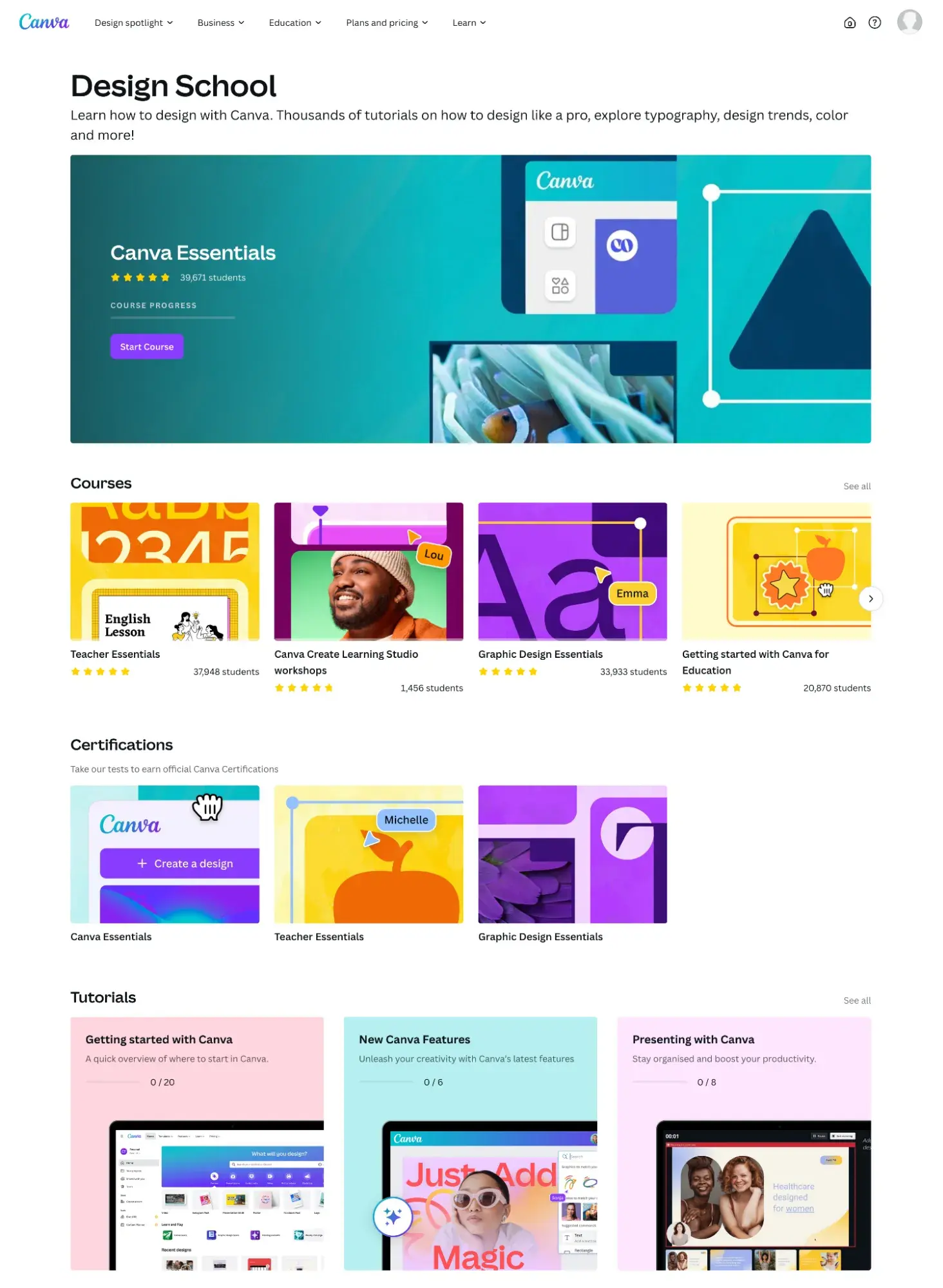
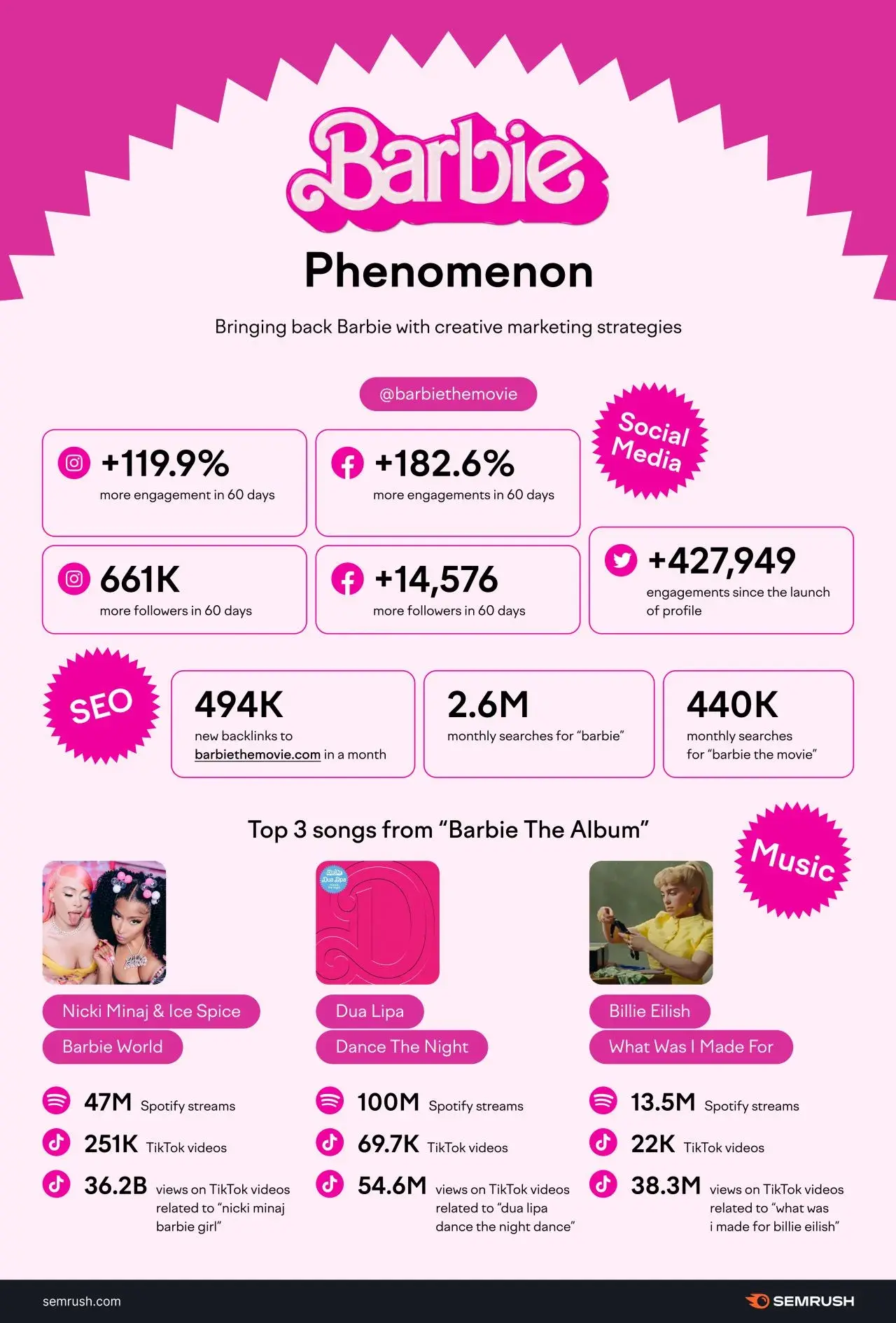


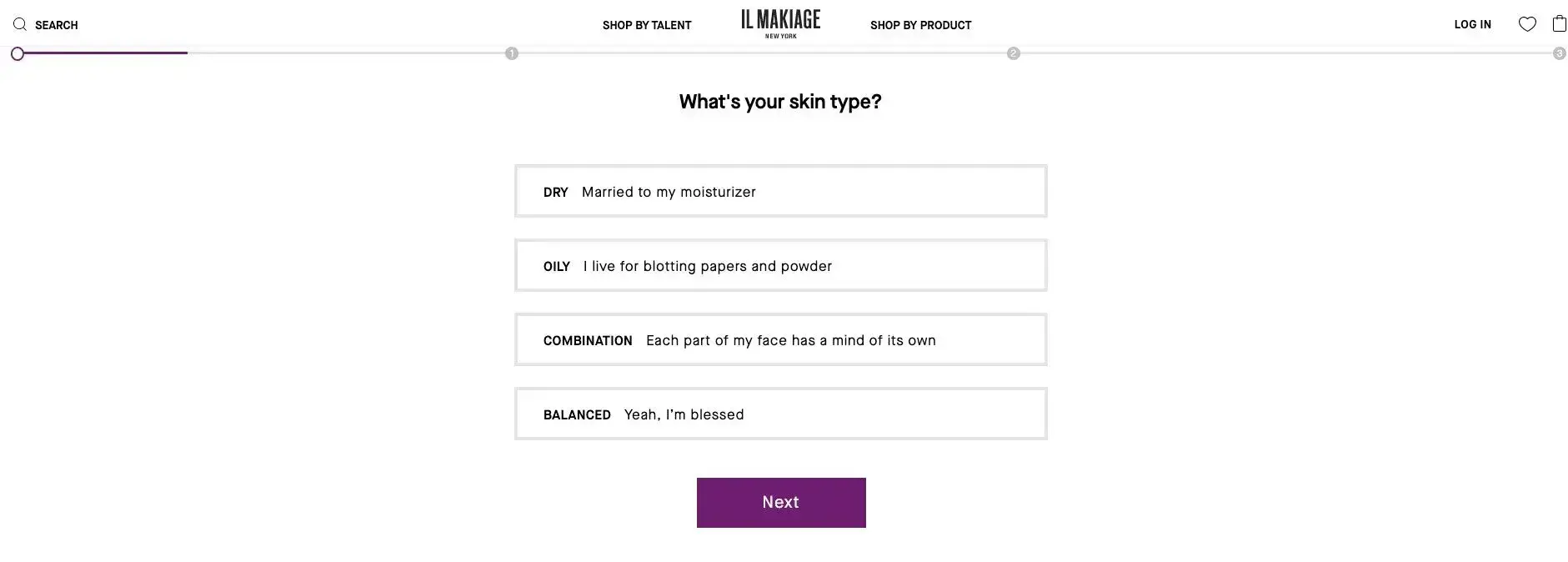











![Download Now: The 2024 State of Social Media Trends [Free Report]](https://i4lead.com/wp-content/uploads/2024/12/3dc1dfd9-2cb4-4498-8c57-19dbb5671820.png)

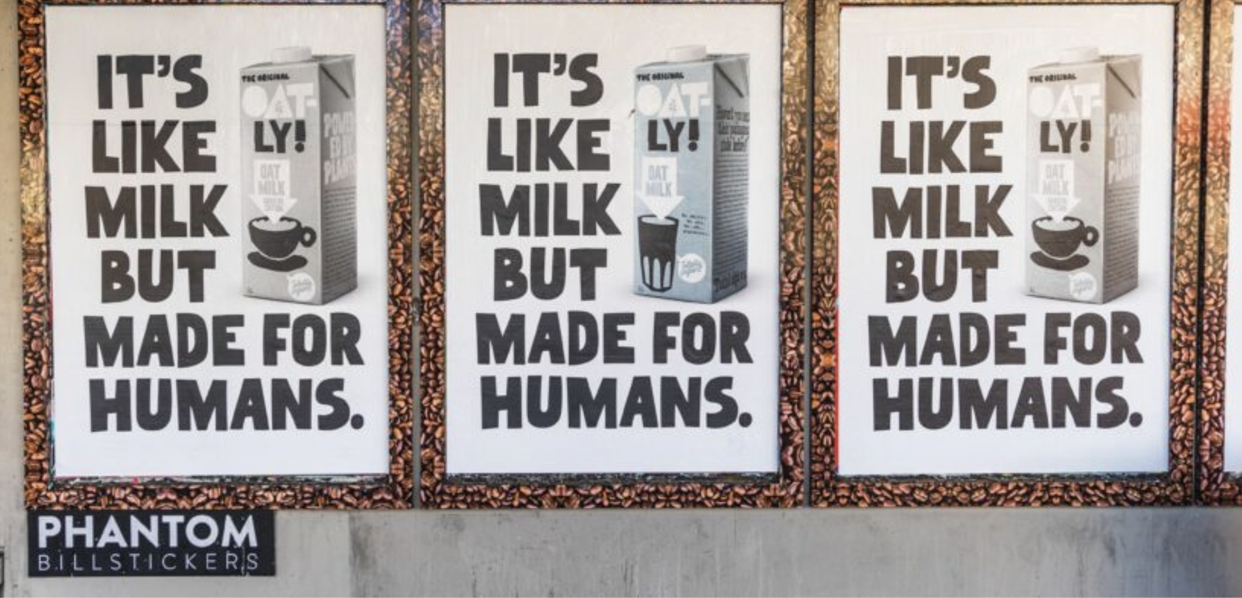








![Download Now: The Annual State of Artificial Intelligence in 2024 [Free Report]](https://i4lead.com/wp-content/uploads/2024/12/b72f2b25-8cc9-4642-9a1b-1e675d3d273b-4.png)

.webp?width=700&height=298&name=What is RAI (2).webp)
![Download Now: The Annual State of Artificial Intelligence in 2024 [Free Report]](https://i4lead.com/wp-content/uploads/2024/12/b72f2b25-8cc9-4642-9a1b-1e675d3d273b-3.png)





![Download Now: The State of U.S. Consumer Trends [Free Report]](https://i4lead.com/wp-content/uploads/2024/12/ebf9ec8e-a468-455a-943e-80aa4e6be694.png)


